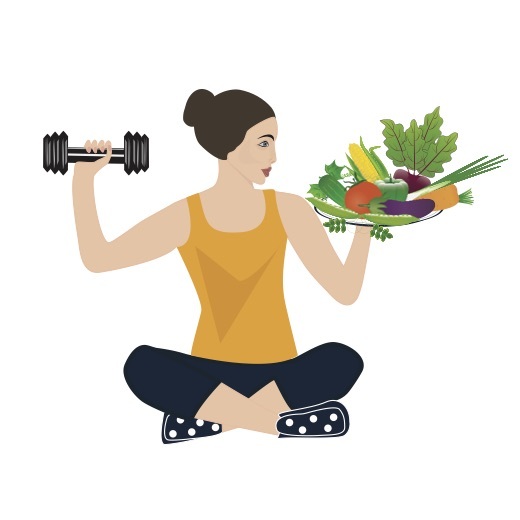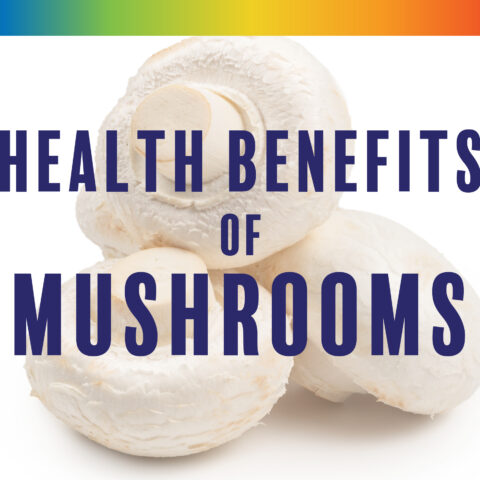A Carb Cycling Plan for Paleo Eaters

Here’s our carb cycling plan with everything you need to know about how to limit your carb intake while maintaining your Paleo Diet.
What Is Carb Cycling?
Carb cycling is a dietary strategy that limits carbs as a fuel source. There are strategies for adding carbs at just the right times, and limiting them when they aren’t necessary. [3] Engaging in short bouts of a keto-like diet is known as “carb cycling.” Some people use carb cycling as a way to get some of the benefits of the keto diet while avoiding some common keto side effects.
When carb cycling, you’ll plan times of eating higher or lower amounts of carbs. For example, you might eat few carbohydrates Sunday through Friday, and then enjoy more carbs on Saturdays. Or, you might eat low carb for two months, higher carb for one month, and then repeat. The general idea is to promote metabolic flexibility, meaning that your body can run easily on either glucose from carbs (and protein via gluconeogenesis) or on ketones from fats.
Some people may alter their carbohydrate consumption based on the season, and women may adapt their carb intake around their menstrual cycles. According to medical experts, adding more carbs around the time of ovulation and the week just before your period may help optimize hormone levels. But the science isn’t settled. Experiment and do what works best for your body.
We aren’t huge fans of going keto here at The Paleo Diet, so we don’t recommend going super low-carb as part of a carb cycling plan. While there are certainly benefits of trying keto short-term to help with specific problems, like epilepsy, it isn’t a great strategy for healthy individuals to follow long-term. [1, 2] Dr. Cordain has shared his take on the consequences of a long-term keto diet.
With that in mind, we do support limiting your carbs for short periods of time. Our Paleo ancestors also intermittently entered ketosis during times of food shortages.
Our Ancestors Carb Cycled
Carb cycling makes a lot of sense from a Paleo Diet perspective. During the times of Paleolithic man, there would be times when higher carbohydrate foods were more available and other times when they would be scarce, particularly due to the change in seasons.
In the summer, higher carbohydrate fruit was readily available. In the autumn, roots would be gathered for winter storage. At some point, those fruits and starches would run out, and the hunter-gatherers would need to rely more on hunting than gathering. At that point, the diet would become more of a low-carb, high-protein/high-fat diet—a natural form of carb cycling based on food availability.
To match the ebb and flow of the food supply, you can try going keto/low carb for about three months over the winter (December, January, February), and then return to higher carb in the spring. This would mimic our ancestors’ ability to gather food that lasts into the fall/early winter and subsequent reliance on animal protein and fats for a few months after the root crops have run out.
The Benefits of Carb Cycling
Carb cycling might not be for everyone, and we don’t typically recommend you dive headfirst into it. If you’re generally healthy and don’t struggle with major blood sugar problems or diabetes, and you want to give carb cycling a try, go for it! While there aren’t many human studies on carb cycling just yet, there are a couple of potential benefits of carb cycling worth mentioning.
One reason you might want to try carb cycling is to optimize your weight loss efforts. This is because times of carbohydrate overfeeding help to reset your leptin levels. [4] Leptin is a hormone that signals to the body that you’ve had enough to eat. If leptin levels fall too low, your body will keep sending you signals to eat more, leading to overeating and weight gain.
Carb cycling may also improve your insulin sensitivity. [5] Insulin resistance is what happens when your body starts ignoring signals from the hormone insulin, which helps keep your blood sugar levels balanced. If you become insulin resistant, you may be on your way to developing diabetes and cardiovascular disease.
Plus, maintaining balanced blood sugar levels is another way carb cycling could help with weight loss.
Of course, carb cycling isn’t for everyone. If you feel that you’re losing lean muscle instead of fat or otherwise not feeling your best, see a nutritionist or stop the carb cycling altogether.
Drawbacks of Carb Cycling
Carb cycling may have some drawbacks. One of the main potential issues is a lack of nutrients from limiting certain healthy fruits and veggies due to their high carb count. These foods are rich sources of vitamins and minerals that are important for metabolic activities in the body.
Some of the nutrients that may be low on a carb cycling eating pattern include:
- Vitamin A
- B vitamins (B1, B6, and folate)
- Vitamin E
- Calcium
- Iron
- Potassium
- Fiber
Additionally, the initial weight loss that’s achieved on carb cycling may not result from fat loss. It may instead be due to a loss of lean muscle or water weight, due to the lowered levels of insulin and Insulin-like Growth Factor (IGF), which would otherwise promote muscle growth. [6, 7] This could be bad news, since ideally you’ll want to maintain lean muscle while also losing weight. [8] That’s where it can be helpful to work with a nutritionist and/or personal trainer to measure your stats along the way.
The Paleo Diet Carb Cycling Plan
To follow a carb cycling plan while following The Paleo Diet, you’ll generally eat low carbohydrates most days, while still eating plenty of other healthy foods. Then you’ll follow specific times of “refeeding” windows where you’d eat more carbs from Paleo sources like root vegetables and fruit.
While the Paleo version of carb cycling isn’t going to include things like pasta, bread, or brown rice, there are plenty of foods to choose from on high carb days or time periods.
Paleo, High-Carb Foods
- Sweet potatoes and yams
- Plantains
- Taro root
- Winter squashes, like butternut squash or acorn squash
- Tropical fruits, like mangoes, pineapples, bananas, and dates
These foods can be cycled in for a half day or for a whole day. They can also make up a series of high-carb days, weeks, or months at a time. There are plenty of excellent Paleo recipes you can follow for times of low carb eating and times of higher carb refeeding.
Ideas for Higher Carb Periods
- Enjoy high carb fruit smoothies with bananas for breakfasts
- Use Paleo tortilla wraps for “sandwich” meals
- Snack on plantain chips with salsa
- Get creative with root veggies and try sweet potato “toast” or crispy beet chips
- Enjoy fruit for dessert, like this cherry berry medley
An example day of eating high carb might look like this:
- Breakfast: Berry and banana smoothie
- Lunch: Cassava wrap with lettuce, tomatoes, and avocado. Serve with beet chips and a side of fruit salad.
- Dinner: Grass-fed beef burger on a Paleo sweet potato bun, Paleo slaw, and a side of sweet potato fries.
Then, when you’re back to low carb/keto, avoid the fruit and starchy veggies and return to a diet focused on meats, fish, leafy greens, nuts, healthy fats, and low-carb vegetables like broccoli.
The Bottom Line
If you’re healthy and want to give it a try, carb cycling can be a good way to try periods of going low carb without adopting a full keto diet. When eating carb-heavy, stick with healthy fruit and starchy veggies. There’s no need to start eating dairy.
Of course, carb cycling isn’t for everyone. If you feel that you’re losing lean muscle instead of fat or otherwise not feeling your best, see a nutritionist or stop the carb cycling altogether. Listen to your body and see what works best for you.
Remember, we at The Paleo Diet advocate for a balanced diet of healthy foods including natural meats, vegetables, fruits, fish, and nuts. If you want to try carb cycling, stick to a whole food diet, and pay close attention to how you feel along the way.
References
[1] Oh, R., Gilani, B., & Uppaluri, K. R. (2021). Low Carbohydrate Diet. In StatPearls. StatPearls Publishing.
[2] Dhamija, R., Eckert, S., & Wirrell, E. (2013). Ketogenic diet. The Canadian journal of neurological sciences. Le journal canadien des sciences neurologiques, 40(2), 158–167. https://doi.org/10.1017/s03171…;
[3] Coyle E. F. (1991). Timing and method of increased carbohydrate intake to cope with heavy training, competition and recovery. Journal of sports sciences, 9 Spec No, 29–52. https://doi.org/10.1080/026404…;
[4] Dirlewanger, M., di Vetta, V., Guenat, E., Battilana, P., Seematter, G., Schneiter, P., Jéquier, E., & Tappy, L. (2000). Effects of short-term carbohydrate or fat overfeeding on energy expenditure and plasma leptin concentrations in healthy female subjects. International journal of obesity and related metabolic disorders : journal of the International Association for the Study of Obesity, 24(11), 1413–1418. https://doi.org/10.1038/sj.ijo…;
[5] Galic, S., Oakhill, J. S., & Steinberg, G. R. (2010). Adipose tissue as an endocrine organ. Molecular and cellular endocrinology, 316(2), 129–139. https://doi.org/10.1016/j.mce….
[6] Nakao, R., Abe, T., Yamamoto, S., & Oishi, K. (2019). Ketogenic diet induces skeletal muscle atrophy via reducing muscle protein synthesis and possibly activating proteolysis in mice. Scientific reports, 9(1), 19652. https://doi.org/10.1038/s41598…;
[7] Perissiou, M., Borkoles, E., Kobayashi, K., & Polman, R. (2020). The Effect of an 8 Week Prescribed Exercise and Low-Carbohydrate Diet on Cardiorespiratory Fitness, Body Composition and Cardiometabolic Risk Factors in Obese Individuals: A Randomised Controlled Trial. Nutrients, 12(2), 482. https://doi.org/10.3390/nu1202…;
[8] Cava, E., Yeat, N. C., & Mittendorfer, B. (2017). Preserving Healthy Muscle during Weight Loss. Advances in nutrition (Bethesda, Md.), 8(3), 511–519. https://doi.org/10.3945/an.116…;
Betsy Schroeder
Betsy does research and writing for a few different websites in the natural health field after taking Masters level courses in Nutrition & Functional Medicine through the University of Western States.
More About The Author




